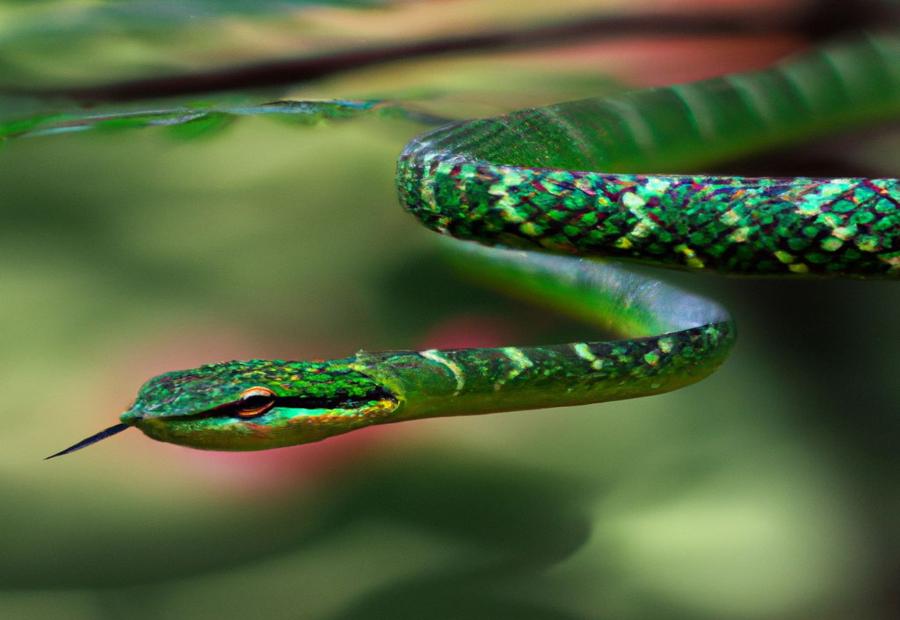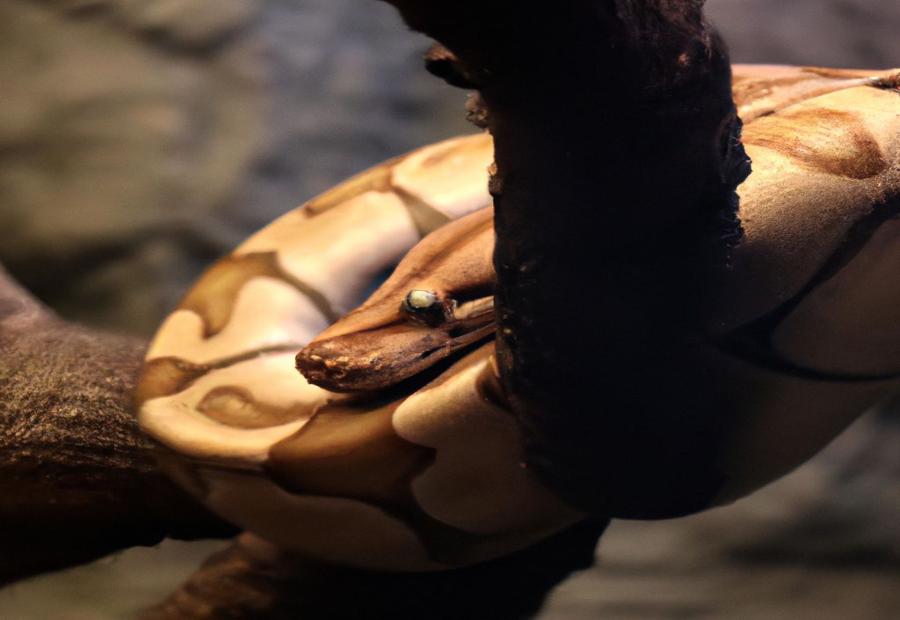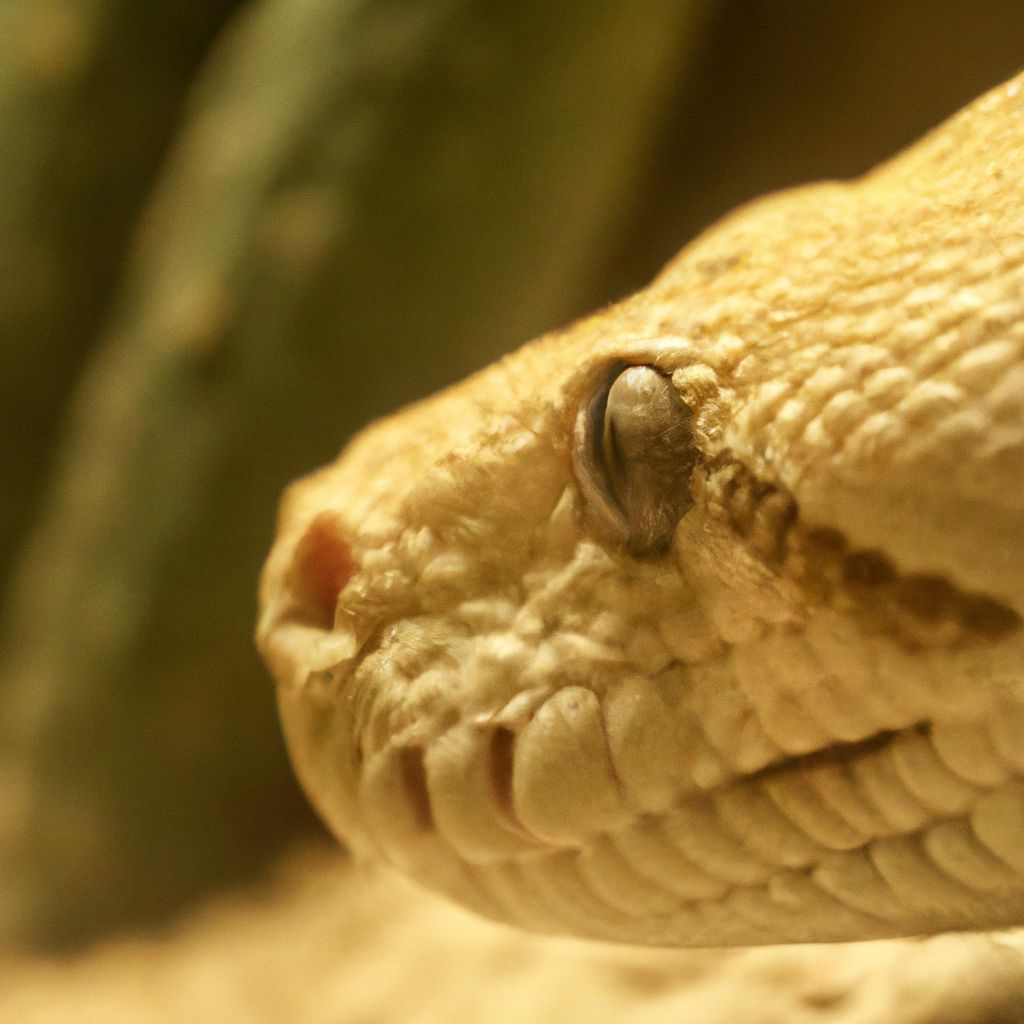Snakes have long been the subject of fascination and fear, surrounded by numerous myths and misconceptions. These misconceptions not only perpetuate fear but also hinder efforts in snake conservation. It is essential to debunk these common myths and gain a better understanding of these remarkable creatures. This article aims to provide an insightful look into the world of snakes by examining the reality behind these myths. By referencing reputable sources and scientific studies, we can separate fact from fiction and promote a more accurate perception of snakes and their ecological importance. Let’s explore the common myths surrounding snakes and uncover the truth about these often misunderstood creatures.
1. Snakes are generally shy and avoid humans: Contrary to popular belief, snakes are not aggressive and do not attack humans unless provoked. They prefer to retreat and avoid confrontation.
2. The majority of snake species are non-venomous: Not all snakes are dangerous or venomous. In fact, most snake species are harmless to humans and play important roles in ecosystems.
3. Snakes have dry and smooth scales, not slimy: Despite the common misconception, snakes have scales that are dry and smooth to the touch, not slimy or disgusting.
4. Many snakes are highly skilled climbers: Snakes are not limited to slithering on the ground. They are adept climbers and can navigate various surfaces, including trees and walls.
5. Snakes play an important role in ecosystems: Snakes are vital in controlling rodent populations and maintaining a balanced ecosystem. They help keep other pest populations in check.
6. Safely interact with snakes: It is possible to safely interact with snakes by giving them space, not harming them, and seeking professional help for snake-related concerns.
Conclusion: By dispelling common myths and promoting snake conservation, we can better understand and appreciate these fascinating reptiles.
Why are There So Many Myths Surrounding Snakes?

Photo Credits: Ruggedreptiles.Com by Jordan Adams
There are numerous reasons as to why there is an abundance of myths surrounding snakes. One of the primary factors is the fear and lack of knowledge that people have towards these creatures. The way snakes appear and their potential danger can lead to the creation of exaggerated stories and myths.
Furthermore, cultural and religious beliefs have played a significant role in perpetuating these myths. Throughout history, snakes have been depicted in various cultures and religions, often with supernatural or symbolic significance. This has contributed to the rise of myths and legends surrounding these creatures.
Misidentification is another factor that adds to the spread of snake myths. It can be challenging to identify different snake species, especially for those who are unfamiliar with them. This lack of knowledge often results in misinformation, leading to myths about snake behaviors and characteristics.
In addition, snakes have long been a subject of folklore and storytelling, casting them as mysterious creatures. Over time, these stories may have been embellished or altered, further contributing to the myths surrounding snakes.
Interestingly, some myths about snakes have been perpetuated for the sake of conservation and protection. By associating snakes with negative qualities or dangers, people may be less inclined to harm or kill them, thus safeguarding these animals.
Common Myths About Snakes

Photo Credits: Ruggedreptiles.Com by Bryan Davis
Curiosity about snakes often ignites tales and beliefs that aren’t entirely accurate. In this eye-opening section, we’ll debunk common myths surrounding these fascinating creatures. Prepare to have your preconceptions shattered as we delve into sub-sections like snakes being aggressive attackers, all snakes being venomous and dangerous, the misconception of snakes being slimy and disgusting, their surprising agility on flat surfaces, and the truth about their cold-blooded nature. Hold on tight as we separate fact from fiction in the intriguing world of snakes.
1. Snakes are Aggressive and Always Attack Humans
Snakes are not always aggressive towards humans. They typically only attack when they feel threatened or cornered. Most snake species prefer to avoid contact with humans and will retreat if given the chance. Instead of attacking outright, snakes have defensive behaviors like hissing, rattling, or mock strikes to warn potential threats. Unprovoked attacks on humans by snakes are rare. Snake bites usually occur when people unintentionally come into contact with them or try to disturb them. It is important to remember that snakes have a vital role in ecosystems by controlling rodent populations and maintaining biodiversity. Rather than fearing snakes, it is better to understand and appreciate their role in nature.
True story: A hiker encountered a snake on a trail and approached it cautiously. The snake sensed the hiker’s presence and quickly slithered away into the bushes without showing aggression. The hiker admired the snake’s beauty from a safe distance and continued on the trail with a newfound respect for these fascinating creatures.
2. All Snakes are Venomous and Dangerous
All Snakes are Venomous and Dangerous
All snakes are not venomous and dangerous. This misconception has led to fear and misunderstanding about these reptiles. In reality, the majority of snake species, about 600 out of approximately 3,600 known snake species, are non-venomous and pose no threat to humans. This means that less than 20% of snakes have venom and can be considered dangerous. Venomous snakes typically use their venom for hunting prey and as a defense mechanism. They are not aggressive towards humans and will only use their venom if they feel threatened. Venomous snake bites are rare, and most occur when humans accidentally disturb a snake. It is crucial to debunk the myth that all snakes are venomous and dangerous. By educating ourselves about different snake species and their behaviors, we can learn to coexist with these creatures and appreciate their role in ecosystems. Snakes are generally shy and will usually avoid human contact if given the chance.
3. Snakes are Slimy and Disgusting
Snakes are not slimy and disgusting, contrary to a common myth. They have dry and smooth scales that enable them to move efficiently and protect their bodies. These scales do not have slime; instead, they provide a sleek and streamlined appearance.
The misconception that snakes are slimy and disgusting may arise from their preference for moist environments. This can make their scales appear glossy, but it is important to note that this is not due to slime or any disgusting substance. The moisture helps snakes shed their skin, a natural process for growth.
Debunking this myth is crucial to counter the negative perception of snakes. By understanding that they are neither slimy nor disgusting, we can cultivate appreciation for these fascinating creatures and their important role in ecosystems.
To safely interact with snakes, it is best to remember that most snakes are generally shy and avoid humans. It is advisable to observe them from a distance and avoid handling them unless you have proper training and expertise. Additionally, it is essential to respect their natural habitats and refrain from harming or killing them.
4. Snakes Can’t Move on Flat Surfaces
Snakes can indeed move on flat surfaces, which goes against the commonly believed myth. The misconception may have originated from the notion that snakes rely on trees or branches to navigate their surroundings. However, snakes are highly adaptable to different environments and can efficiently traverse various types of terrain, including flat surfaces.
Snakes employ a unique method of locomotion known as “serpentine motion” or “undulatory locomotion.” This involves the contraction and relaxation of their muscles, enabling them to exert force against the ground and propel themselves forward. Additionally, their scales provide grip on the surface, granting them traction and facilitating smooth slithering.
It is important to acknowledge that this ability is not limited to specific snake species, but rather applies to a wide range of snakes worldwide. Snakes are highly versatile creatures with diverse capabilities that suit their respective habitats.
One remarkable example of a snake showcasing adaptability and the ability to navigate flat surfaces is the black mamba (Dendroaspis polylepis), which can be found in sub-Saharan Africa. This venomous snake is renowned for its speed and agility, effortlessly moving across the ground and adeptly climbing trees. Despite its name, the black mamba exhibits a brownish-gray coloration with a distinct black mouth lining. Acquiring accurate information is essential in order to truly appreciate and respect these astounding creatures within their natural habitats.
5. Snakes are Cold-Blooded Killers
Snakes are not cold-blooded killers. Here are some facts that debunk this myth:
– Snakes are cold-blooded animals, relying on external heat sources to regulate body temperature.
– Only a small percentage of snakes are venomous, and even fewer are dangerous to humans.
– Snakes are not naturally aggressive towards humans, preferring to avoid contact unless provoked.
– Snakes help control populations of rodents and pests in ecosystems.
– Educating and understanding snakes can dispel fear and misconceptions, promoting coexistence with these fascinating creatures.
Accurate information about snakes is important to avoid unnecessary fear and harm. Understanding their behaviors and ecological role allows for promoting snake conservation and peaceful coexistence.
Reality Check: Debunking Snake Myths
Get ready for a reality check as we dive into debunking common myths about snakes. In this exciting section, we’ll explore some fascinating aspects of snake behavior and anatomy. From discovering that snakes are generally shy and tend to avoid humans, to learning that the majority of snake species are non-venomous, we’ll challenge the misconceptions that surround these incredible creatures. Get ready for some eye-opening facts about snakes’ dry and smooth scales, their impressive climbing abilities, and the vital role they play in maintaining our ecosystems.
1. Snakes are Generally Shy and Avoid Humans
Snakes are generally shy and avoid humans.
2. The Majority of Snake Species Are Non-Venomous
The vast majority of snake species are actually non-venomous. It is only a small percentage of the numerous snake species found worldwide that possess venom. These venomous snakes have specialized glands in their head that are responsible for producing venom, which they use for hunting and self-defense. On the other hand, non-venomous snakes rely on different techniques such as constricting their prey or swallowing it whole.
It is worth noting that not all venomous snake species pose a threat to humans. While it is important to exercise caution around venomous snakes, it is crucial to avoid assuming that every snake is dangerous. Understanding the distinction between venomous and non-venomous snakes is particularly valuable for snake enthusiasts, researchers, and individuals residing in snake habitats. Recognizing that the majority of snake species are non-venomous helps dispel unnecessary fears and emphasizes the significant role that snakes play within ecosystems. It also grants us the opportunity to appreciate the wide array of snake diversity and focus on conservation efforts.
When coming across a snake, it is always best to maintain a safe distance and refrain from assuming that it is venomous. Instead of relying on fear and misconceptions, it is important to educate oneself about different snake species and their behaviors in order to ensure safe interactions with these captivating creatures.
3. Snakes Have Dry and Smooth Scales, Not Slimy
Snakes have dry, smooth scales. Their scales are similar to fish scales, not slimy like snails or slugs. Dry scales help snakes move efficiently on different surfaces. Snake scales are made of keratin, the same substance as human hair and nails. The smoothness of snake scales allows them to navigate easily through grass, soil, and other environments.
Fact: Some snake species, like the African house snake, have microscopic ridges on their scales that improve their grip on surfaces. This makes them great climbers.
4. Many Snakes are Highly Skilled Climbers
Many snakes are highly skilled climbers, and they have unique adaptations that enable them to navigate vertical surfaces. It is important to understand the following facts about snake climbing abilities:
1. Scales: Snakes possess specialized scales on their bellies and sides, known as ventral scales, which provide them with traction. These scales have dermal papillae, which give snakes a strong grip.
2. Muscle and Body Structure: Snakes have long and flexible bodies, along with strong muscles that assist them in wrapping around objects and maintaining balance while climbing. They are capable of supporting their own body weight and moving smoothly.
3. Tree-Dwelling Snakes: Certain snakes live in trees and have adapted to climbing by developing prehensile tails that can grip branches. Additionally, their slender bodies make it easier for them to maneuver through trees.
4. Rock Climbing: Some snakes, such as the Asian vine snake, have the ability to climb rocks and cliffs by using their bodies and scales to cling to uneven surfaces.
5. Habitat Exploration: Snakes utilize their climbing abilities to access food, escape from predators, and find suitable shelter. They climb trees to hunt birds, explore crevices for prey or mates, and survey their surroundings.
By acknowledging that many snakes are highly skilled climbers, we dispel the misconception that they are limited to the ground. This recognition emphasizes the remarkable adaptations of these creatures and underscores the importance of providing appropriate habitat enrichment for snakes kept in captivity. While observing these fascinating creatures in their natural environment, it is essential to maintain a safe distance and respect their space.
5. Snakes Play an Important Role in Ecosystems
Snakes play a crucial role in ecosystems, as they serve as natural predators, controlling pests, maintaining biodiversity, and preventing the spread of diseases. By regulating populations of rodents, insects, and other small animals, snakes prevent overpopulation and the consequent disruption of ecosystems. Among them, garter snakes are particularly beneficial in controlling agricultural pests, which in turn reduces the reliance on harmful chemical pesticides and protects crops. Additionally, snakes act as prey for larger animals, contributing to the balance of predator-prey relationships. Notably, certain snake species, such as the king cobra, prey on venomous snakes, indirectly safeguarding against snakebite-related deaths and the spread of venomous snake bites. Recognizing and valuing the significance of snakes in ecosystems are essential for their conservation, as well as for the overall well-being of our natural environments.
How to Safely Interact with Snakes
When it comes to safely interacting with snakes, there are several important steps to keep in mind. Following these steps will help ensure not only your safety but also the well-being of the snakes and the overall balance of the ecosystem.
1. Maintain a safe distance: One of the first and foremost rules is to always keep a safe distance from snakes. This will help minimize the risk of any potential harm.
2. Observe quietly from a distance: If you happen to come across a snake in the wild, it’s best to observe it quietly from a safe distance. This allows you to admire and learn about them without interfering with their natural behavior.
3. Avoid approaching or provoking: It’s crucial to never approach, touch, handle, or provoke a snake. Doing so can trigger defensive behaviors that may put you at risk.
4. Stay calm and avoid sudden movements: When near a snake, it’s important to remain calm and avoid making sudden movements. This will help prevent startling or provoking the snake, keeping both of you safe.
5. Back away slowly: If a snake happens to be in your path, the best course of action is to carefully back away from it. By giving the snake enough space to move away, you are minimizing the chances of any unwanted encounters.
6. Leave them undisturbed: In most cases, it’s best to leave snakes undisturbed. Snakes play a vital role in the ecosystem, especially in controlling rodent populations. Unless you find yourself in exceptional circumstances or have professional guidance, it’s generally advised to let snakes be.
Remember, snakes are an important part of nature’s delicate balance. By following these guidelines, you can safely interact with snakes while respecting their role in the ecosystem and ensuring everyone’s well-being.
Fact: Snakes play a crucial role in controlling rodent populations and maintaining a healthy balance in nature.
Some Facts About Debunking Common Myths About Snakes:
- ✅ Snakes are not slimy, but their scales can give them a shiny appearance.
- ✅ Snakes do not have external ears and cannot hear the sound or dance to the tunes of a snake charmer’s flute.
- ✅ Snakes do not have a well-developed nervous system or emotional quotient to remember or seek revenge against humans.
- ✅ The color or shape of a snake’s body cannot be relied upon for identification, as venomous snakes can have various colorations and head shapes.
- ✅ Traditional remedies like placing a hot iron rod on a snake bite or sucking out the venom are ineffective and may cause more harm.
Frequently Asked Questions
Question 1: Are black snakes and blue tongue lizards effective in keeping brown snakes away?
Answer: No, there is no scientific evidence to support the claim that black snakes and blue tongue lizards can keep brown snakes away. This is a myth and not based on factual information.
Question 2: Are snakes poisonous or venomous?
Answer: Snakes are generally venomous, not poisonous. Venom needs to enter the bloodstream to cause harm, while poison needs to be ingested or touched.
Question 3: Which country has the deadliest snakes?
Answer: While Australia has venomous snakes, the highest number of snakebite deaths occur in densely populated parts of India and Asia. So, India and Asia have more snakebite deaths compared to Australia.
Question 4: Do snakes have poor eyesight?
Answer: While some snakes have poor eyesight, others have relatively good vision. In fact, some snakes can even improve their eyesight when threatened.
Question 5: Are young snakes more dangerous than adults?
Answer: No, there is no evidence to suggest that young snakes inject more venom or are more dangerous than adults. Venom toxicity can vary among individuals of the same species.
Question 6: Do snakes attack unprovoked and are they aggressive?
Answer: No, snakes do not attack unprovoked. They often display defensive behaviors when they feel threatened. Snakes are not naturally aggressive and would prefer to slither away from humans.


